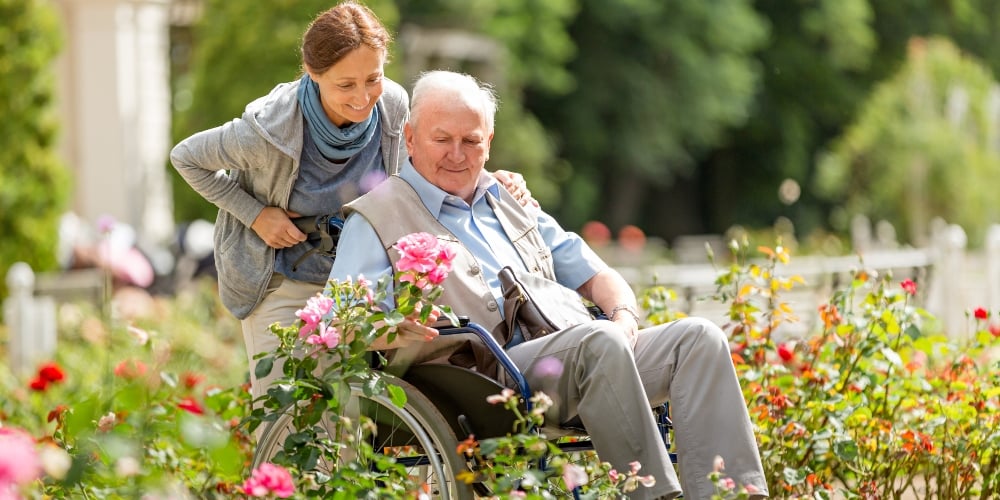
Loneliness among seniors is a growing concern, impacting their overall health and quality of life. With the rise of social isolation due to factors like mobility issues, the loss of close family members, and geographic distance from loved ones, addressing loneliness is more important than ever. But it’s not all bad news. Emerging trends, innovative solutions, and actionable tips for families and caregivers are making a real difference in helping seniors combat isolation and improve their mental and physical well-being.
The Impact of Loneliness: Research and Data on Senior Isolation
Understanding the scope of loneliness in seniors is key to addressing it effectively. Studies show that loneliness is a serious public health issue for older adults.
Research from the National Institute on Aging indicates that loneliness and social isolation are associated with increased risks of heart disease, stroke, depression, and cognitive decline.
In fact, studies have shown that loneliness can have a more significant impact on health than smoking or obesity.
1. Loneliness and Mental Health
Loneliness can have a profound effect on a senior’s mental health. According to the National Institute on Aging, lonely individuals have a higher risk of experiencing depression, anxiety, and even suicidal thoughts. Social isolation is often linked to lower levels of emotional well-being and overall life satisfaction. One study published in JAMA Psychiatry found that socially isolated seniors were more likely to suffer from depressive symptoms than their connected peers.
2. Loneliness and Physical Health
Loneliness isn’t just a mental health issue—it’s a physical one as well. Research conducted by the University of Chicago found that loneliness was linked to a greater risk of early mortality among seniors. It also negatively affects sleep quality and contributes to a weakened immune system, making it harder for seniors to fight off illness.
In fact, one longitudinal study published in The Journal of Aging and Health found that seniors with strong social networks had a 50% lower risk of dying over a 10-year period than those who were isolated.
3. The Benefits of Social Connectivity on Senior Health
On a more positive note, the research also highlights the profound impact social connection has on senior health. Studies show that older adults with strong social relationships are healthier, both mentally and physically. These individuals tend to have better cognitive function, fewer chronic conditions, and even lower blood pressure. Social engagement also helps seniors stay active, which is essential for maintaining mobility and independence as they age.
Emerging Trends in Senior Social Connectivity
The way seniors connect with others is changing, thanks to technology and a more intentional focus on social connectivity within aging populations. Let’s take a look at some of the most exciting and innovative trends that are shaping the way older adults interact with their communities:
1. Virtual Reality (VR) for Social Interaction
Virtual reality has traditionally been associated with gaming, but it’s now being used as an exciting tool to combat loneliness among seniors. VR platforms designed for older adults offer virtual experiences that can simulate everything from family gatherings to exploring new places or even attending live concerts. Some programs allow seniors to "meet" with family members in virtual spaces, creating a more immersive and interactive connection than simple video calls.
For example, VR programs like Rendever provide seniors with opportunities to explore new worlds and reconnect with their memories, from walking down the streets of their hometown to traveling to destinations they've always wanted to visit.
2. Digital Platforms to Facilitate Socializing
As smartphones and tablets become more common among seniors, digital platforms have emerged as essential tools for reducing isolation. Social media groups, video conferencing platforms (like Zoom), and social networking apps tailored to older adults provide easy-to-use ways for seniors to stay connected with loved ones and engage with their peers. Programs like GrandPad, a tablet specifically designed for older adults, aim to simplify technology and bring seniors closer to their families by enabling them to share photos, videos, and messages.
3. Pet Programs and Animal-Assisted Socialization
Seniors are increasingly discovering the power of pets to boost social engagement. Not only do pets provide companionship, but they also help seniors meet others in their community. Pet programs in retirement communities often organize group walks or pet socialization events where seniors can connect over their shared love for animals. Therapy animals and animal-assisted therapy programs are also gaining popularity as ways to enhance seniors' emotional well-being, offering both physical and emotional benefits.
Actionable Tips for Families and Caregivers to Combat Loneliness
Family members and caregivers are the first line of defense when it comes to combating loneliness in older adults. Here are some simple but powerful ways they can help foster social connectivity for their loved ones:
1. Schedule Regular Social Check-Ins
Even if distance is a challenge, regular social check-ins can make a big difference. Set up weekly or bi-weekly video calls using platforms like Zoom or Skype, or opt for a simple phone call. Involve your loved one in planning the calls—let them know in advance when to expect them.
For example, a simple conversation about their week, a favorite TV show, or a shared family story can do wonders for their emotional well-being. If possible, get other family members or friends involved to create a sense of a “social circle” even at a distance.
2. Encourage Participation in Local Activities
Many communities have activities specifically designed for seniors, such as local exercise classes, book clubs, or art classes. Research options in your area and encourage your loved one to attend events that suit their interests. If they’re not comfortable going alone, offer to accompany them initially or set up transportation.
Additionally, volunteering is a fantastic way for seniors to engage with others. Helping at a local food bank or participating in a community garden gives them a sense of purpose and connection.
3. Use Technology for Social Interaction
Technology is a great way to help seniors stay socially connected, but it’s essential to ensure that they’re comfortable using the tools. Teach them how to use video chat platforms, messaging apps, or even social media to engage with others. Start small—perhaps with an app like WhatsApp for quick messaging or a simple video call on FaceTime.
Remember to keep the user interface as simple as possible, and offer ongoing support if they have questions or need assistance navigating the platforms.
4. Organize Family or Neighborhood Social Events
Social gatherings are an excellent way to combat loneliness, whether it's a small family dinner, a block party, or a monthly potluck. If your loved one is in a senior living community, consider organizing a “family day” where relatives can visit and engage with the community’s residents. In neighborhoods, consider setting up walking groups or organizing seasonal events like gardening or book clubs. Encouraging seniors to invite friends or neighbors to these gatherings fosters a sense of belonging and prevents isolation.
The growing issue of loneliness among seniors is one that requires both compassion and action. Emerging trends like virtual reality, digital connectivity, and pet programs are offering innovative solutions, while families and caregivers can play an essential role in staying connected and engaged. By using simple tools like technology and creating social opportunities, we can help reduce isolation and improve the quality of life for our older loved ones.
With research showing the profound impact of loneliness on seniors' physical and mental health, it’s clear that fostering social connections is not just a "nice-to-have"—it’s a necessity for healthy aging. By integrating these strategies and staying proactive in encouraging social engagement, we can ensure that our seniors not only live longer, but live better.
For more helpful articles, tips, and insights on senior well-being and social connectivity, visit our Holistic Health Care Content Hub. Stay informed and find actionable resources to support your loved ones.





